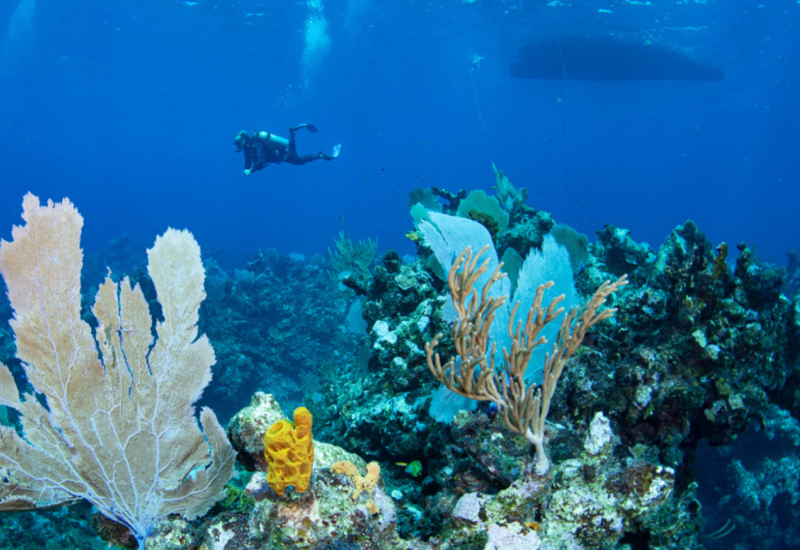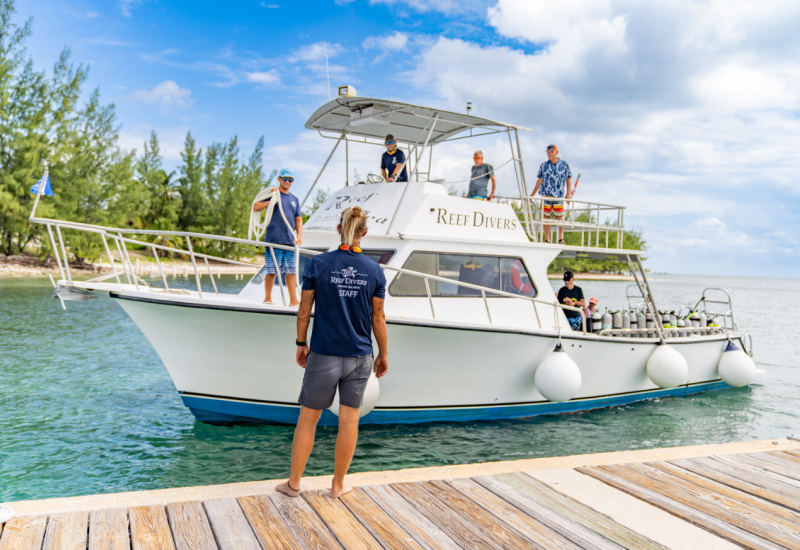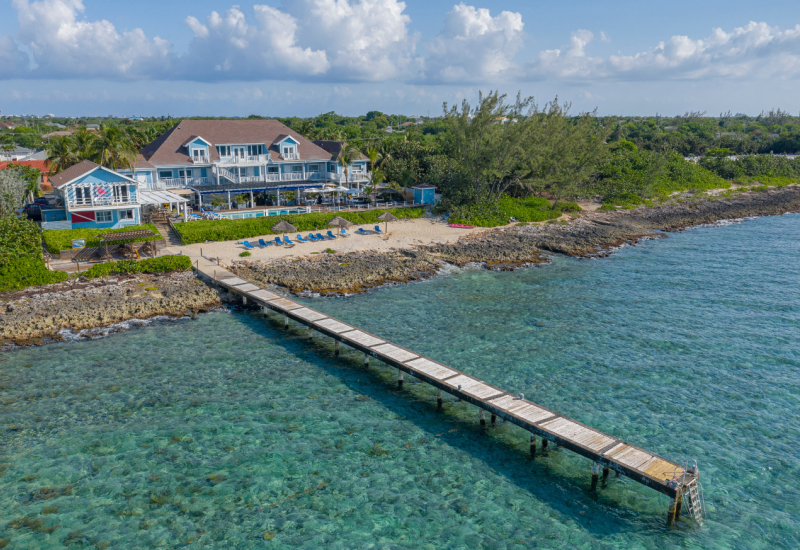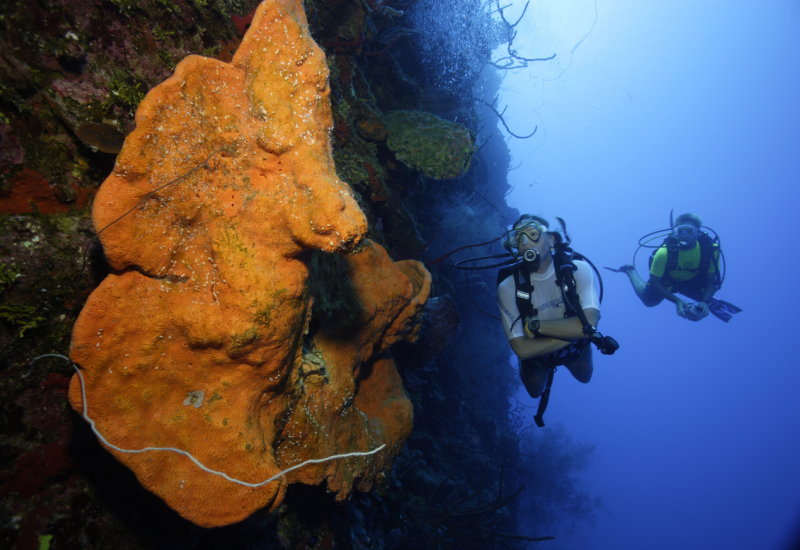History Of Grand Cayman's Kittiwake Shipwreck
The USS Kittiwake is one of the best-known wreck dives in the Caribbean, if not the world. Its convenient location, just off Seven Mile Beach in Grand Cayman, and shallow depths make it a popular site among scuba divers as well as snorkelers and freedivers.
Let’s dive deeper into the history of this iconic shipwreck.
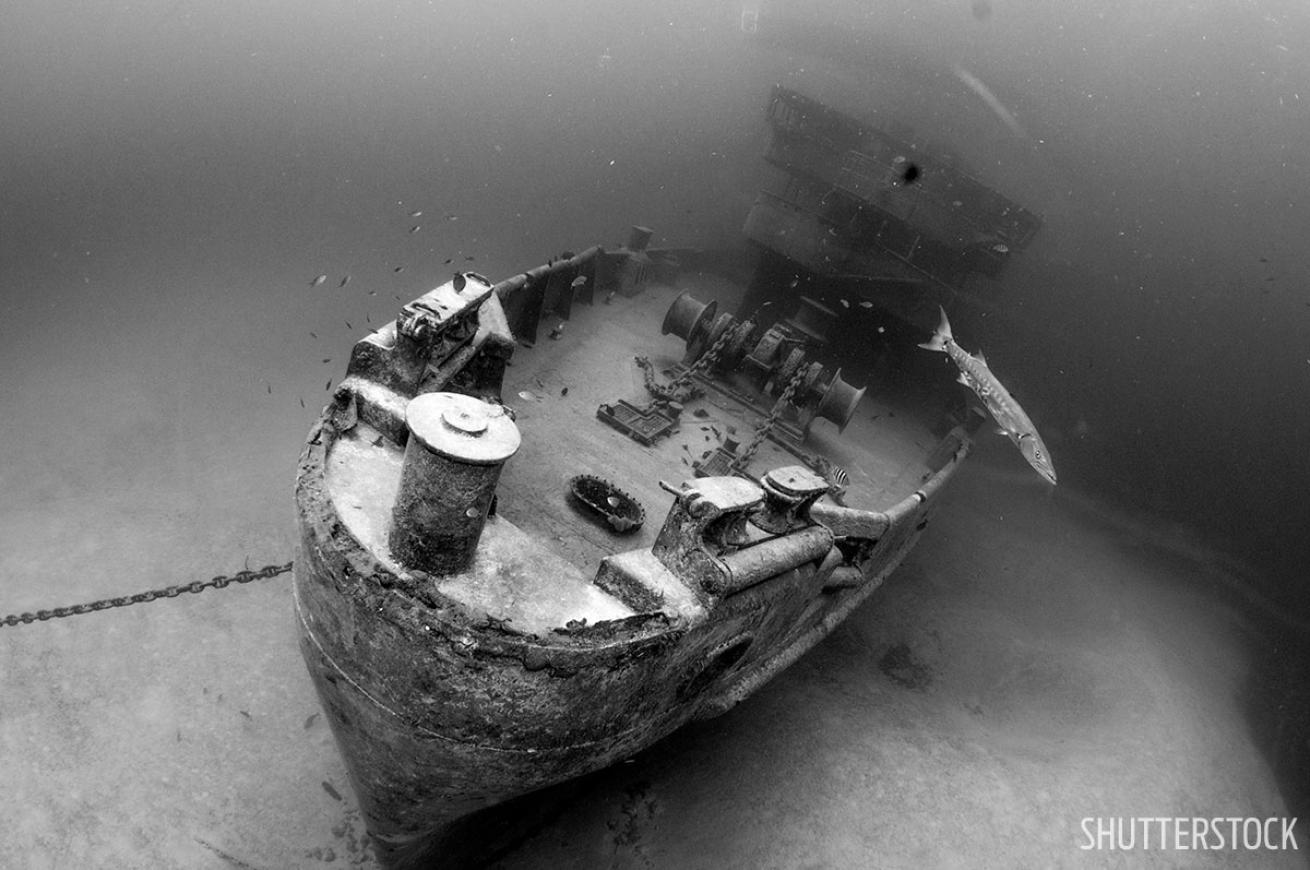
ShutterstockDive into the history of Grand Cayman's Kittiwake, and learn how this WWII ship became a world-renowned scuba diving destination.
Kittiwake's History On The Water
The USS Kittiwake is a Chanticleer-class submarine rescue ship that served as an Auxiliary Submarine Rescue vessel (ASR-13) with the 6th Submarine Squadron, according to the ship database site hullnumber.com. The 251-foot, 2,200-ton ship was launched on July 10, 1945, and was decommissioned September 30, 1994. During its 49 years of service the ship was deployed throughout the Caribbean, Mediterranean, Atlantic and Indian oceans.
Kittiwake accompanied submarines during sea trials and maneuvers where its crew would monitor dive operations and practice underwater-rescue procedures. In some instances, the ship would act as a running target or recover practice torpedoes and mines.
One notable example was when Kittiwake assisted the USS George Washington during the first successful firing of a Polaris missile from an underwater submarine on July 20, 1960, off Cape Canaveral, Florida.
Kittiwake also helped during salvage and rescue operations, such as in 1949, when it provided divers and equipment during an operation to free the Missouri (BB-63) after it had become grounded off Thimble Shores, Virginia.
Of course, its rescues weren’t limited to submarines. While stationed off Key West, Florida, in 1963, Kittiwake picked up 12 Cuban refugees from the Jose Maria Perez, three of them children, and carried them safely to Key West.
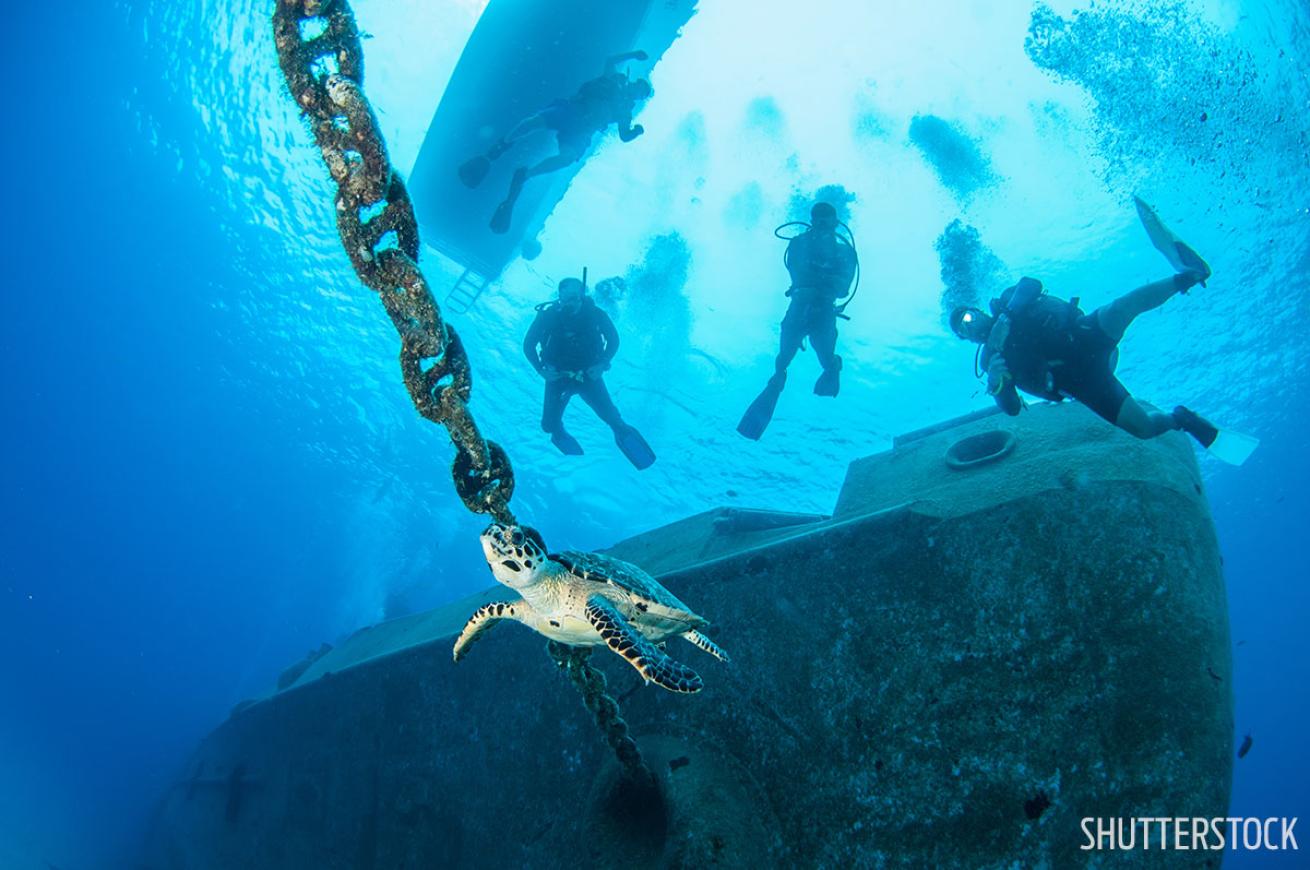
ShutterstockScuba divers often encounter large marine life such as sea turtles, grouper, stingrays and barracuda while visiting the Kittiwake.
Many of the Kittiwake’s exploits are still classified, but there are some tales that have come to light about ASR-13 — such as these record-record breaking exploits listed by the crew in All Hands, the magazine of the United States Navy.
Clyde M. Prickett set a new open-water deep-diving record for the Navy while serving aboard Kittiwake. On April 21, 1949, in Panama Bay he descended to a record-breaking depth of 501 feet.
The Kittiwake also set a world record for the deepest submarine-rescue exercise, taking an officer and four others to a depth of 705 feet on September 13, 1959.
One of Kittiwake’s best-known stories came after the space shuttle Challenger disaster on January 28, 1986. The Department of Defense and the United States Coast Guard undertook a massive search for the space shuttle’s black box. It was the Kittiwake and her crew who eventually recovered the Challenger’s black box from the bottom of the Atlantic Ocean.
After 49 years of service, Kittiwake was decommissioned in 1994 and mothballed to Norfolk, Virgina. It would wait quietly for eight years, before being called to another kind of service.
Kittiwake Travels To Grand Cayman
When the Cayman Islands decided to add a shipwreck to its world-class scuba diving they reached out to the United States Maritime Administration (MARAD) for a vessel. MARAD is responsible for keeping decommissioned government ships afloat until they can be properly disposed of — ships like Kittiwake.
This expensive and time-consuming process requires cleaning the ships of any and all environmental contaminants. To save money MARAD has devised an alternative method to remove ships from its ever-growing collection. They will donate these derelict vessels to be used as artificial reefs to any state or county that can prove they will properly clean and responsibly tow and sink the ship at an approved site.
MARAD gave the Cayman Islands Tourism Association (CITA) the green light — it would be their first ship donation to a foreign government — and Nancy Easterbrook, founder of Cayman’s Divetech and the project manager of this undertaking, came to pick out the perfect wreck.
It didn’t take her long. The Kittiwake was constructed with high-quality steel, which would hold up to the rigors of life on the seafloor. It’s also a beautiful ship, with a classic profile. But what made it the obvious choice for Easterbrook was its history.
“She was a ship that served divers all of her life,” Easterbrook told CNN. “So it seemed the appropriate ship.”
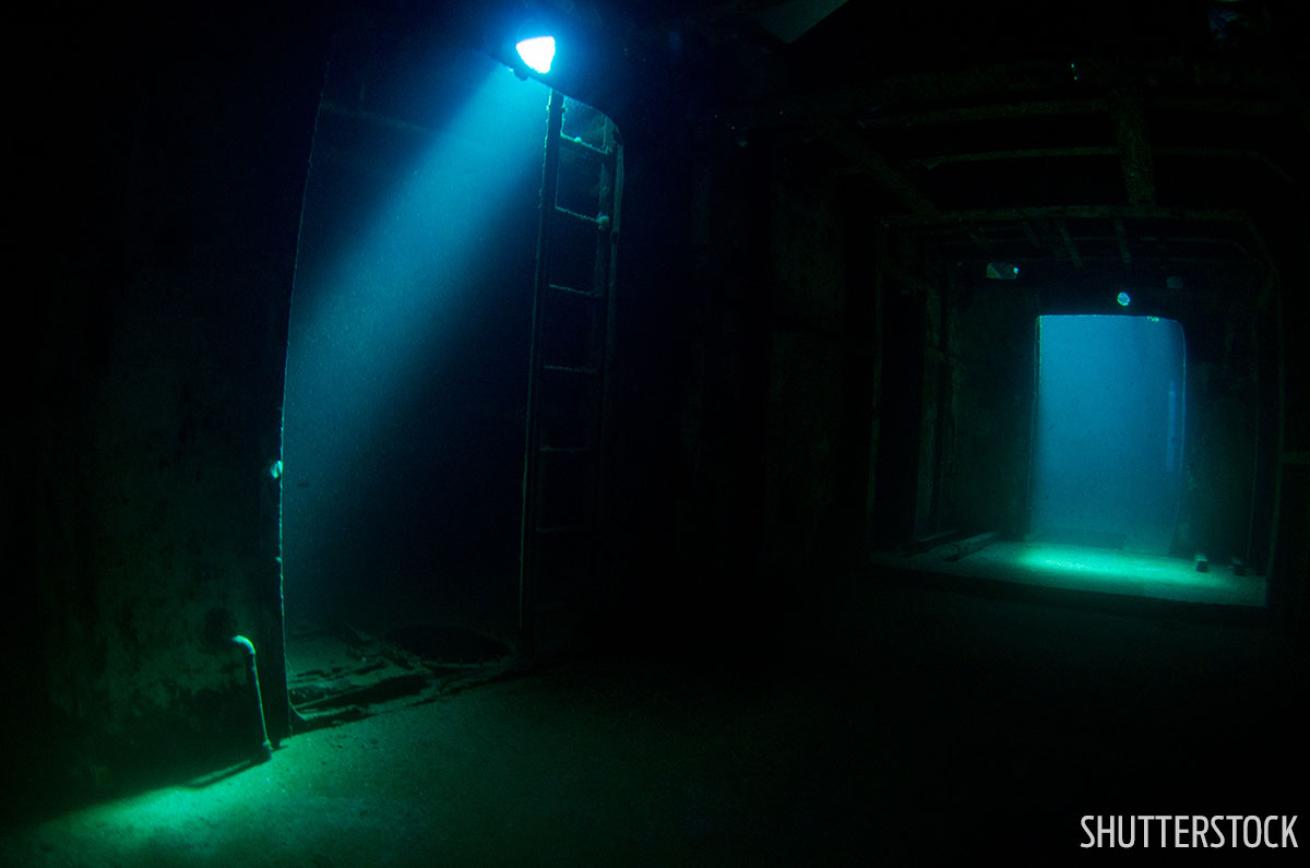
ShutterstockWhile being prepped for sinking, Kittiwake was made more accessible to scuba divers by cutting large holes in its hull and removing doors, hatches, bulkheads and other obstructions.
The CITA got the title for the Kittiwake in August, 2009. This was the easy part, as there would be a number of hurdles and delays on the path toward sinking the ship.
The first involved environmental regulations, which needed to meet the requirements of multiple government agencies including the Cabinet level in Cayman, the United States Coast Guard and Environmental Protection Agency. As part of the agreement with MARAD, the ship needed to be cleaned of any potential environmental hazards prior to sinking.
Because Kittiwake was exported from the United States, it also had to adhere to the Toxic Substances Control Act, Easterbrook explained in an interview with Alert Diver. This U.S. law mandates that any ship donated for the purpose of becoming an artificial reef must be clean of hazardous materials such as polychlorinated biphenyls (PCBs), asbestos and lead-based paint.
These substances were commonly used in ships built during World War II so the process of removing all of the paint and wires from the five-deck Kittiwake was a lengthy one. At one point the entire 2,200-ton ship was dry-docked to replace 32 potentially PCB-laden rubber gaskets — the operation cost the project an additional $40,000.
In addition to being made environmentally friendly, Kittiwake was also made more dive-friendly. Large holes were cut in its hull to create simple swim-throughs. Many of its doors, hatches, bulkheads and even some floors were removed in preparation for the sinking.
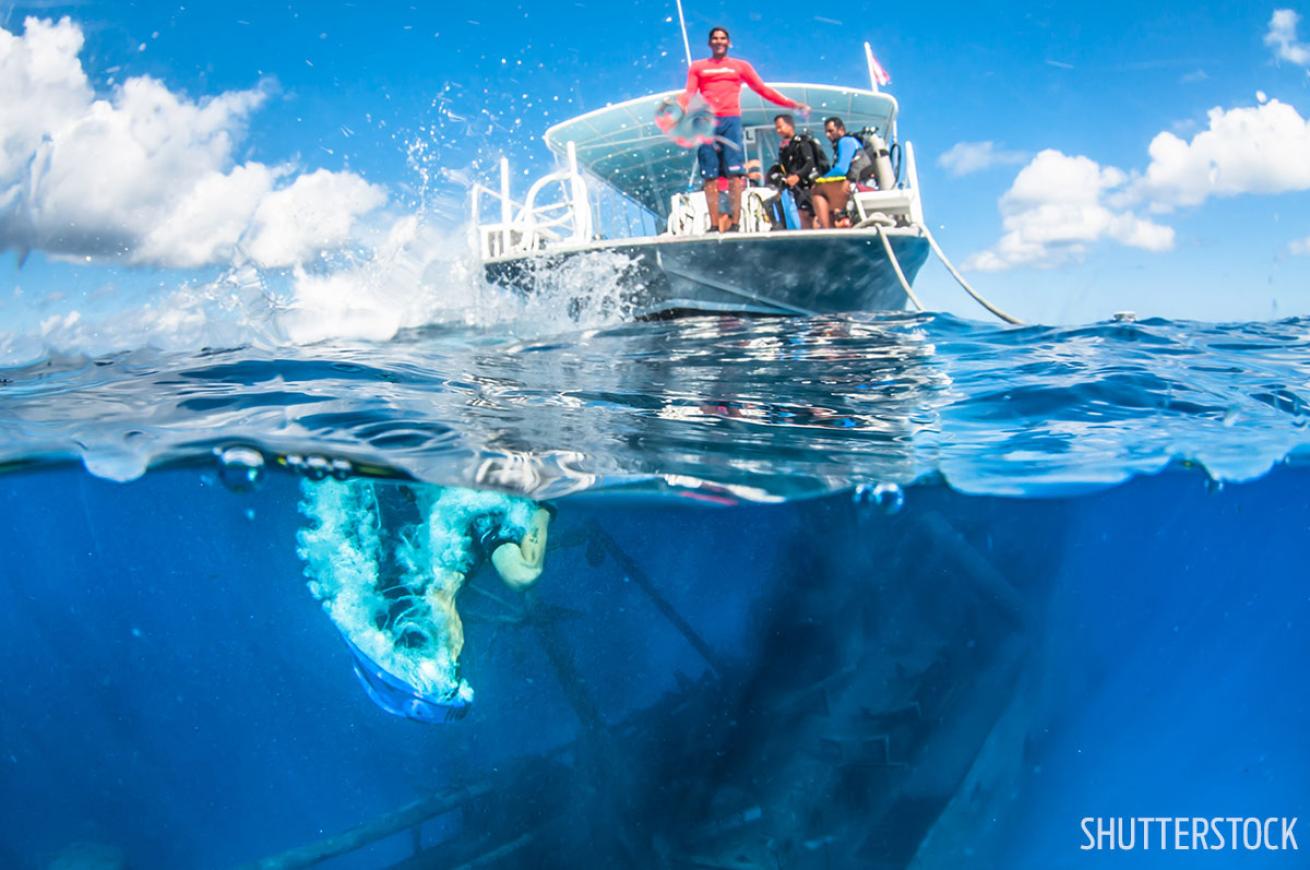
ShutterstockKittiwake's location is shallow and close to shore, making it very accessible for scuba diving, snorkeling and freediving.
Another challenge was selecting the wreck’s final resting place. Environmental impact studies were done in order to protect Grand Cayman’s existing underwater environment — after all, what would be the point of creating an artificial reef if it were to destroy a natural one? Stakeholders also considered what location would be best for dive operators.
In the end, they decided to sink Kittiwake only 800 yards off Seven Mile Beach. There would be minimal impact on the white sandy bottom, and the proximity to shore and shallow depth would allow easier access to visitors.
Even with all the legal, environmental and logistic considerations behind it, Kittiwake still faced delays on its way to the seafloor. By the time the ship was ready and the location chosen, hurricane season had begun. It was too risky to tow the ship from Virginia, so the team had to wait for clearer weather. Their luck finally turned and the Kittiwake departed on its final voyage December 17, 2010, and arrived in Georgetown Harbor on Christmas Day.
Grand Cayman dive operators had to wait three more days to open their new present while the gear used to tow the ship more than 1,250 miles was removed.
But finally, on January 5, 2011 — a decade after the CITA first dreamed of adding a new wreck — the Kittiwake finally sank upright beneath the waves off the coast of Grand Cayman and a new artificial reef was born.
Scuba Diving On The Kittiwake
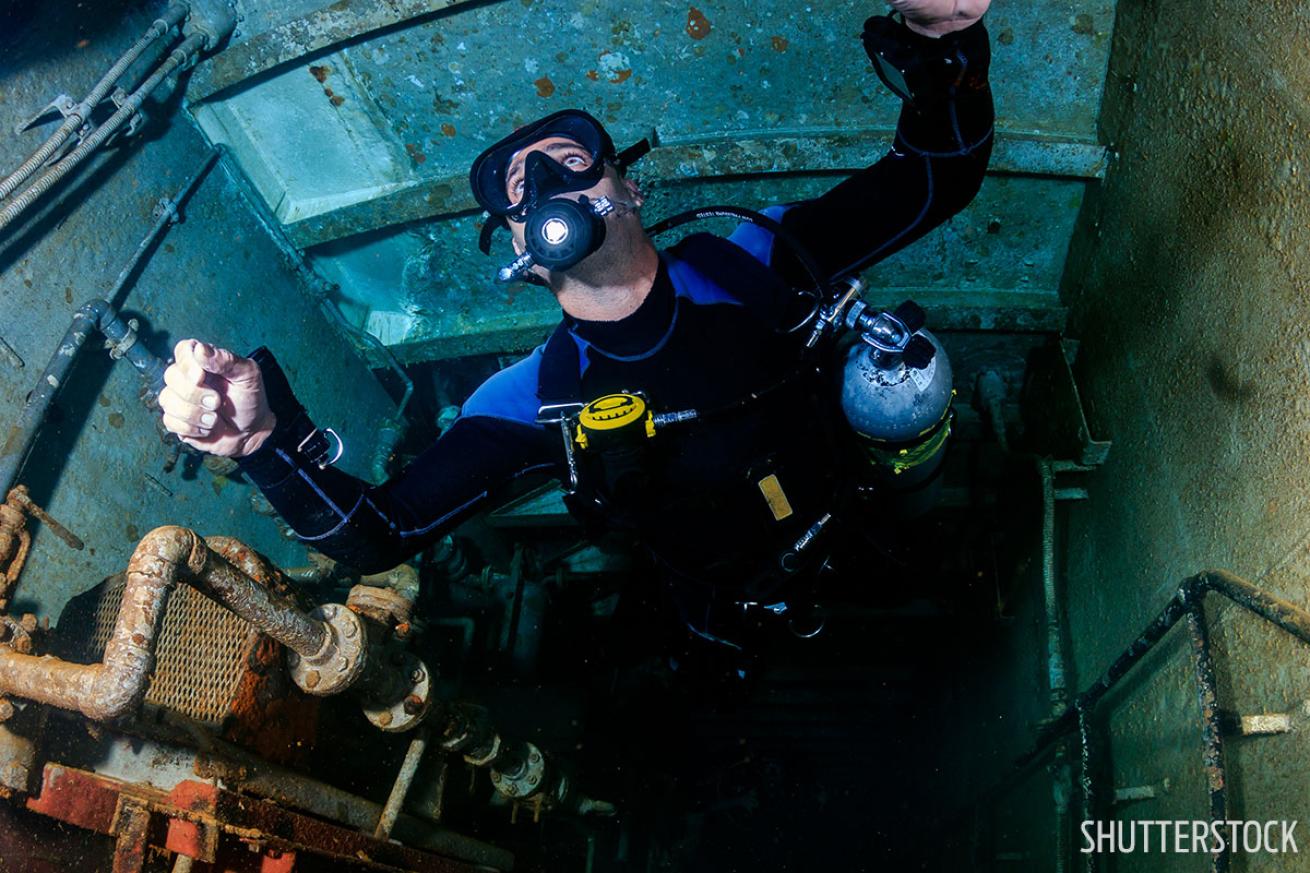
ShutterstockWith proper scuba diving training , you can explore all five decks of the Kittiwake.
Divers exploring the Kittiwake will find a lot to love. The vessel sits in shallow water, allowing plenty of bottom time to take in the sights — highlights include the mess hall, the massive propellers and towering smoke stack, two recompression chambers and the head complete with an intact mirror. The iconic wheel house had its panels removed after being damaged by a storm in early 2017. Scuba divers can still pose at the captain’s wheel, although they may feel more like they are driving the world’s largest convertible. Later that same year Tropical Storm Nate snapped Kittiwake's anchor chains and pushed the wreck onto its port side.
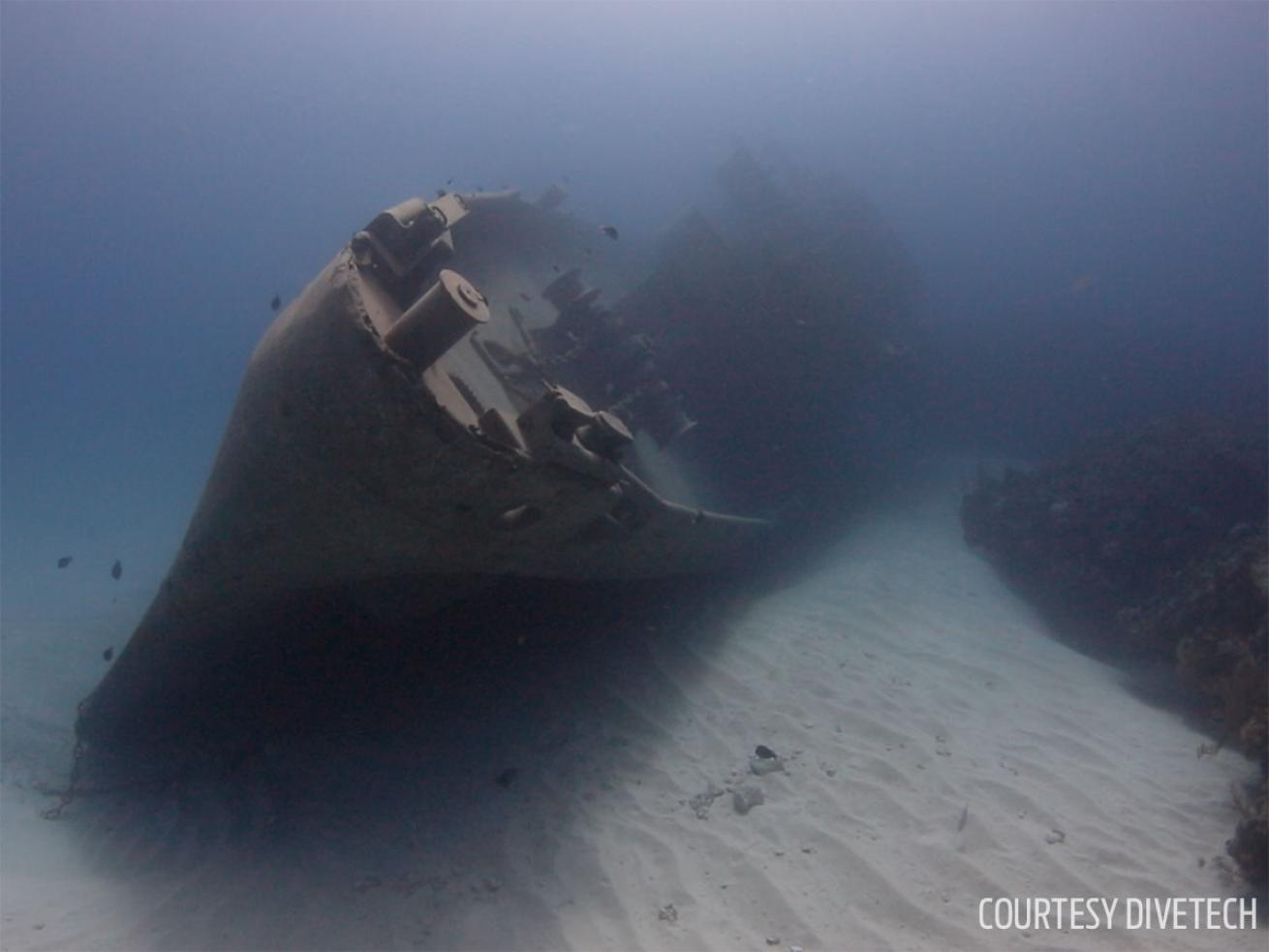
Courtesy DivetechKittiwake was impacted by Tropical Storm Nate in October 2017. The wreck was left mostly undamaged, but now sits at a different angle.
Open-water divers are limited to the first three decks, but those with advanced certifications — such as a rescue diver or wreck-diver — can fully explore all five decks. If you don't already have the training, consider taking a course while scuba diving in Grand Cayman — Kittiwake makes an excellent training ground.
But Kittiwake is more than just a shipwreck, it’s an artificial reef, and the marine life here can be just as much of a draw for divers. Macro life such as peppermint shrimp, arrowhead crabs, fire worms and banded coral shrimp can be found all over the wreck. Garden eels make themselves at home in the sands surrounding the ship, which attracts southern stingrays and eagle rays. Barracuda, schools of horse-eye jacks, turtles and grouper also hang around the site.
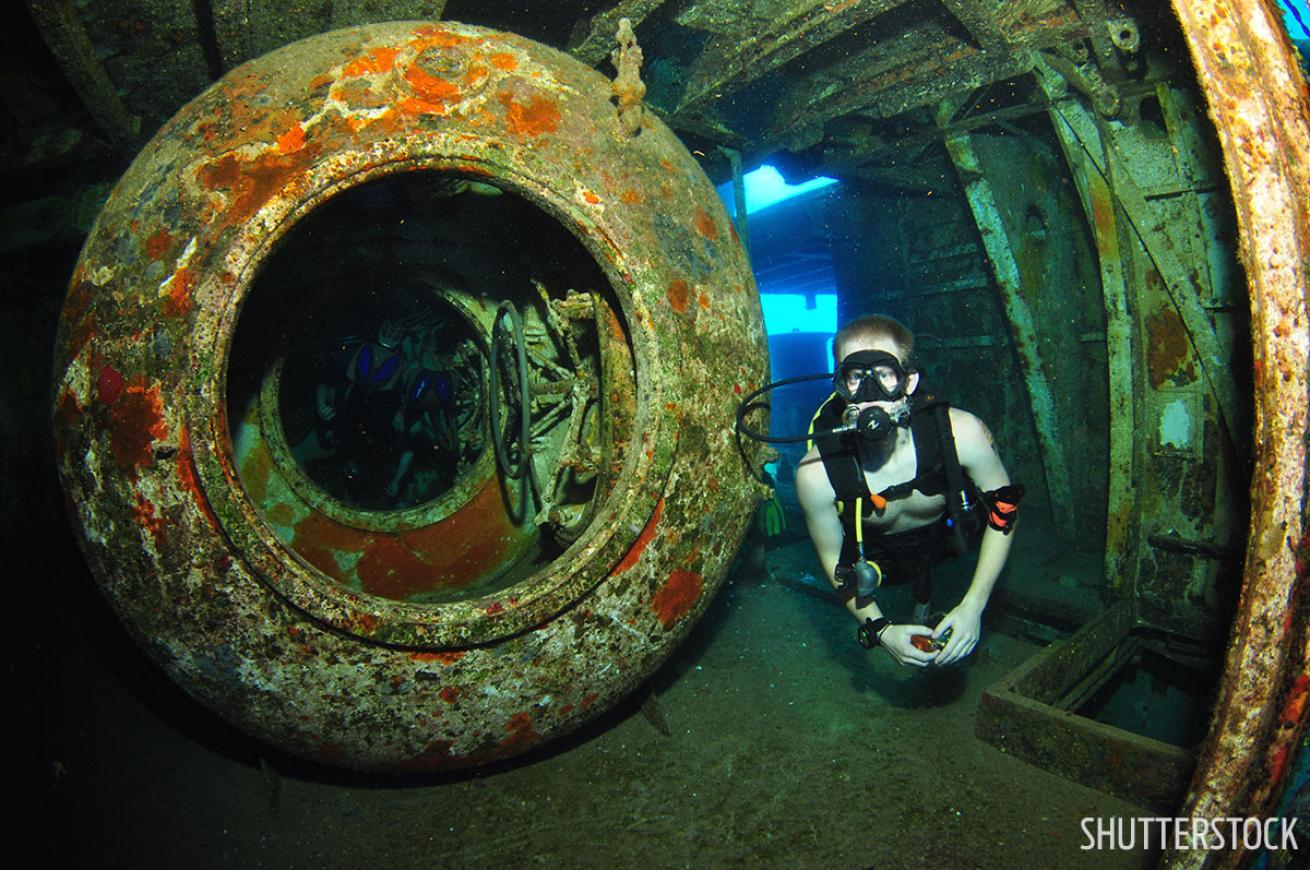
ShutterstockThis is probably the only time you'll want to visit a recompression chamber during a scuba diving vacation.
Depth: The wreck sits at 60 feet, and the highest point sits only 15 feet under the surface. This shallow depth makes Kittiwake popular with snorkelers and freedivers as well as scuba divers.
Visibility: Viz upwards of 100 feet is normal in Cayman.
Temperature: Temps range from high 70Fs in winter to low- to mid-80Fs in the summer.
Need To Know: Kittiwake is considered a private park and requires an admission fee to visit, which must be with a licensed operator. Cost for scuba diving is $10 per visit and $5 for snorkeling — you can also get an annual pass for $31.15 or lifetime pass for $250.
Operators: Divetech
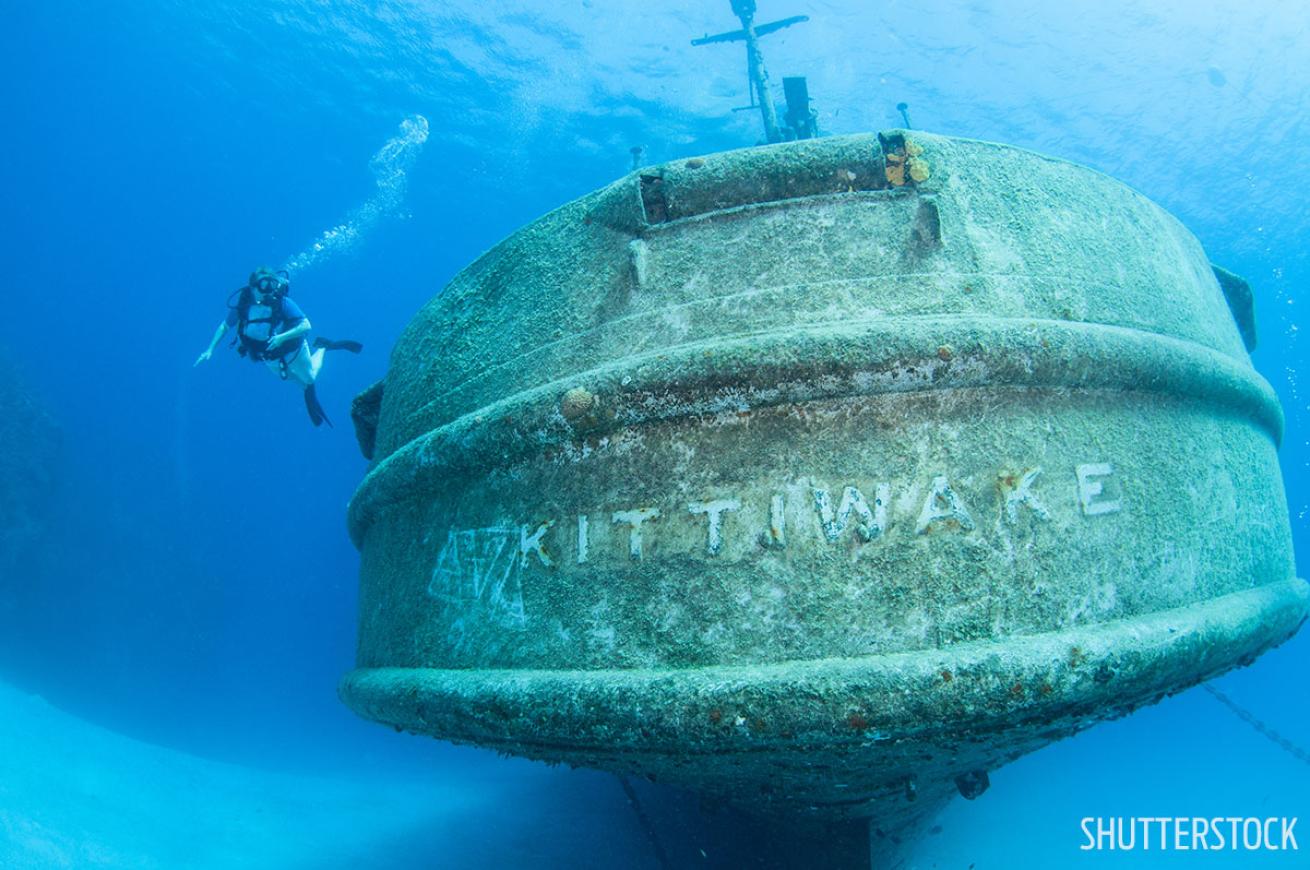
ShutterstockAfter being sunk in 2011, Kittiwake's quickly became a popular site for scuba divers off all skill levels.
Want More?

